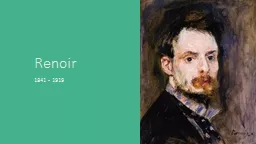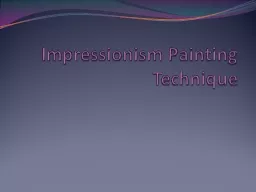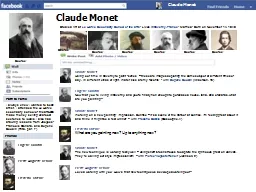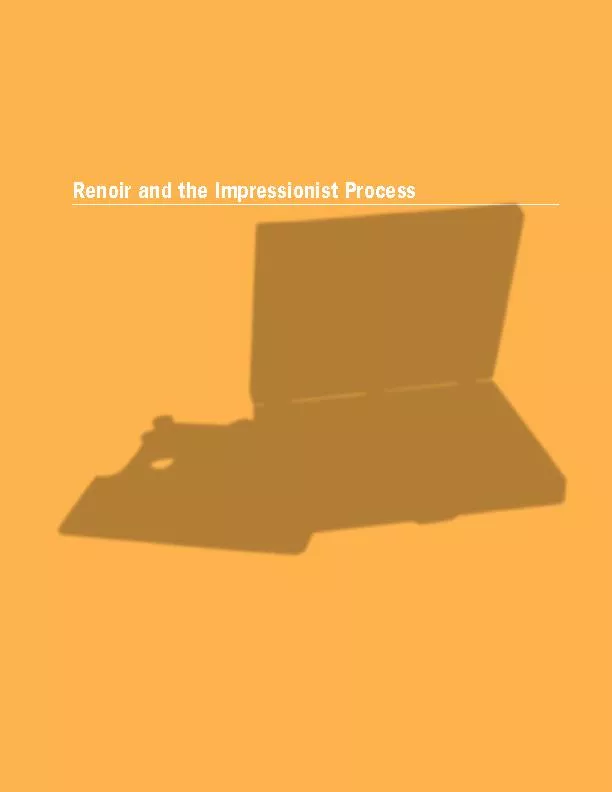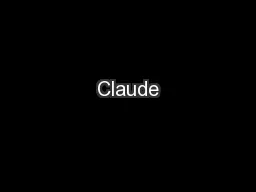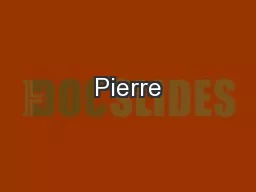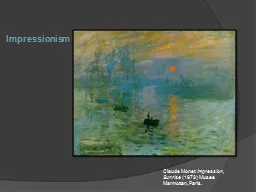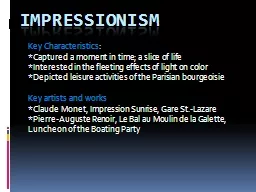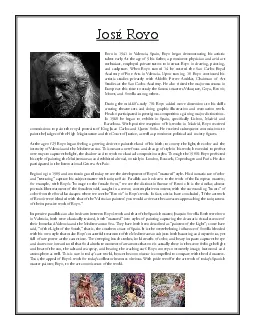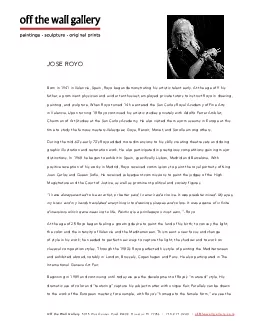PPT-Renoir
Author : min-jolicoeur | Published Date : 2016-02-25
1841 1919 Renoirs Background Renoir was the only member of the Impressionists who came from a working class background For many years before becoming an artist
Presentation Embed Code
Download Presentation
Download Presentation The PPT/PDF document "Renoir" is the property of its rightful owner. Permission is granted to download and print the materials on this website for personal, non-commercial use only, and to display it on your personal computer provided you do not modify the materials and that you retain all copyright notices contained in the materials. By downloading content from our website, you accept the terms of this agreement.
Renoir: Transcript
1841 1919 Renoirs Background Renoir was the only member of the Impressionists who came from a working class background For many years before becoming an artist he worked in a Porcelain factory decorating the china with little flowers. By Joshua P. Tewolde. Oscar-Claude Monet (/moʊˈneɪ/; French: [klod mɔnɛ]; 14 November 1840 – 5 December 1926) was a founder of French Impressionist painting, and the most consistent and prolific practitioner of the movement's philosophy of expressing one's perceptions before nature, especially as applied to plein-air landscape painting.[1][2] The term "Impressionism" is derived from the title of his painting Impression, soleil levant (Impression, Sunrise), which was exhibited in 1874 in the first of the independent exhibitions mounted by Monet and his associates as an alternative to the Salon de Paris.. Painting . Technique. Few Things to note:. Stop grabbing so many paper towels and then throwing unused ones in the trash. Do not put loads of paint on the lids and then wash it all down the sinks- use the paint cups!. Path to Fame. Claude . Monet . Using our time in . Giverny. to paint “series” – these are images depicting the same subject at different times of day, in different kinds of light. Water lilies are my favorite! - . 48 Primary Source 11 Illustration of paint bladder, 1844. Pierre- Louis Bouvier, Manuel des jeunes artistes et amateurs en peinture (manual for young artists and amateur painters). Impressionist I First Name Last Name. All images may be viewed at. The Web Museum. Impressionist Paintings. Characterized by small brush strokes. Reproduced the artist’s visual impression. Studied . Light. Atmosphere. Monet . Using our time in . Giverny. to paint “series” – these are images depicting the same subject at different times of day, in different kinds of light. Water lilies are my favorite! . –. Auguste. Renoir . Pierre . Auguste. Renoir was born in France on February 25, 1841, the sixth of seven children. . His . father was a tailor and his mother was a dressmaker. . Because . he showed a remarkable talent for drawing, Renoir became an apprentice (one who works for someone in order to learn his or her trade) in a porcelain factory at the age of 13 where he painted plates. John . Singer . Sargent &. Pierre . Auguste. Renoir. . __________________________________________________________________________. John . Singer Sargent. . Sargent was born to American parents in Florence, Italy. He grew up in Europe and . Value. Value refers to the . lightness. or . darkness. of a color.. For example, . yellow. is a light value and . purple. is a dark value.. Tint. By adding white, you can change the value of a color. It is now a . Impression, Sunrise . (1873) . Musee. . Marmottan. , Paris.. History. Movement in French Painting during late 1860s and 1870s. Name came from a critic responding to Monet’s . Sunrise. Rejected by the Salon, or Academy of Fine Arts in . Strickland, Carol. . The Annotated Mona Lisa: A Crash Course in Art History from Prehistoric to Post Modern. . Kansas City: Andrews mcMeel Publishing, 2007.. Italian Renaissance. Rebirth. Rediscovery of the art and literature of Greece and Rome, scientific study of the body and natural world, intent to reproduce the forms of nature realistically. :. *Captured a moment in time; a slice of life. *Interested in the fleeting effects of light on color. *Depicted leisure activities of the Parisian bourgeoisie. Key artists and works. *Claude Monet, Impression Sunrise, Gare St.-Lazare. talent early At the age of 9 his father a prominent physician and avid art enthusiast employed private tutors to instruct Royo in drawing painting and sculpture When Royo turned 14 he entered the San Off the Wall Gallery 5015 Westheimer Road 2208 Houston TX 77056allgallrycomJOSE ROYOdistinct influence of Renoir It is the similar almost portrait-like treatment of the female model caught in a seren
Download Document
Here is the link to download the presentation.
"Renoir"The content belongs to its owner. You may download and print it for personal use, without modification, and keep all copyright notices. By downloading, you agree to these terms.
Related Documents

